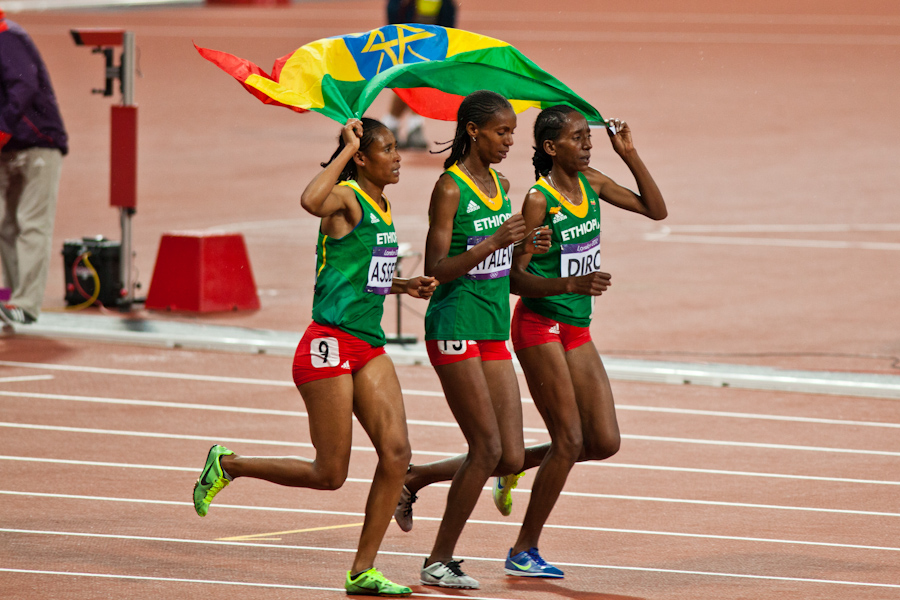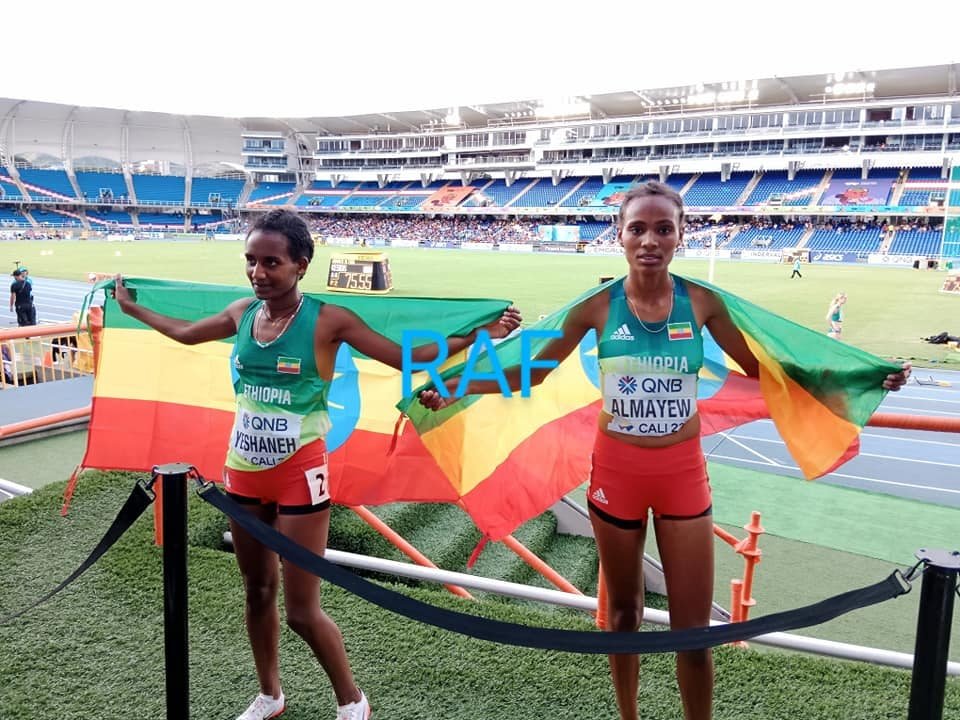History and Legacy of Ethiopian Steeplechase Dominance

The Ethiopian steeplechase legacy is a testament to a confluence of cultural, geographical, and training factors. From the rugged highlands to the global stage, their dominance has etched a unique narrative in the history of the sport.
Ethiopian Steeplechase: A Legacy Forged
The Ethiopian dominance in steeplechase is a result of a perfect storm of factors. The mountainous terrain of Ethiopia provides an ideal training ground for endurance athletes. The challenging climbs and descents develop the strength and stamina necessary to excel in the steeplechase. This geographical advantage has been coupled with a strong cultural tradition of running, where long-distance running has been a part of daily life for centuries. The cultural influence has instilled a love for running, making it a natural path for many young Ethiopians.
Prominent Ethiopian Steeplechasers
Ethiopian steeplechasers have consistently dominated the global stage. Their achievements are a testament to their dedication and skill.
- Kenenisa Bekele: Widely considered one of the greatest distance runners of all time, Bekele’s dominance in cross-country and track events, including the steeplechase, redefined the sport. He holds the world record in the 3000 meters steeplechase, a record that stands as a testament to his unparalleled talent.
- Getaneh Moleke: A force to be reckoned with in the early 2000s, Moleke’s victory in the 2004 Olympic Games in Athens cemented his place among the elite steeplechasers. He also claimed gold at the 2001 World Championships, further solidifying his dominance.
- Ezekiel Kemboi: Although Kenyan, Kemboi’s dominance in the steeplechase, particularly his four world championship titles, has been a constant threat to the Ethiopian dominance. He is considered one of the most successful steeplechasers of all time, showcasing the competitive nature of the sport.
- Conseslus Kipruto: Another Kenyan steeplechase legend, Kipruto’s victory at the 2016 Olympic Games in Rio de Janeiro marked a significant moment in the sport. His exceptional talent and dedication to the steeplechase have solidified his place as one of the best.
Timeline of Major Milestones
The Ethiopian dominance in steeplechase is evident in the numerous championships and records they have achieved.
- 1964: Abebe Bikila, an Ethiopian marathon runner, wins the Olympic marathon in Tokyo, igniting a passion for running in Ethiopia.
- 1980s: Ethiopian runners begin to make their mark in the steeplechase, with athletes like Tilahun Regassa emerging as strong contenders.
- 1990s: The Ethiopian steeplechase legacy continues to grow, with athletes like Berhanu Balew achieving significant success.
- 2000s: The Ethiopian steeplechase dynasty reaches its peak with the emergence of Kenenisa Bekele and Getaneh Moleke, who dominated the global stage.
- 2010s: The Ethiopian dominance continues with athletes like Jairus Birech and Abraham Kibiwot making their mark.
Physiological and Biomechanical Advantages: Ethiopian Steeplechase

The dominance of Ethiopian athletes in the steeplechase is not solely attributed to their rich history and unwavering dedication. Their success is deeply rooted in a unique combination of physiological and biomechanical adaptations that make them particularly well-suited for this demanding event.
Physiological Adaptations
Ethiopian athletes possess several physiological characteristics that contribute to their endurance and speed.
- High Altitude Acclimatization: Many Ethiopian athletes hail from the Ethiopian Highlands, where they live at high altitudes. This exposure to thinner air and lower oxygen levels results in physiological adaptations, such as increased red blood cell count, which allows for more efficient oxygen transport. This enhanced oxygen carrying capacity is crucial for sustained aerobic performance, particularly in a race like the steeplechase that requires significant endurance.
- Lean Body Composition: Ethiopian athletes generally have a lean body composition, with a higher proportion of muscle mass and lower body fat percentage. This lean physique minimizes the energy expenditure required for movement, allowing them to conserve energy and run more efficiently.
- Efficient Energy Utilization: Ethiopian athletes are known for their ability to utilize energy efficiently. They possess a high proportion of slow-twitch muscle fibers, which are more efficient at utilizing fat as fuel, allowing them to sustain high levels of effort for longer periods. This is a crucial advantage in the steeplechase, where athletes need to maintain a high pace for an extended duration.
Biomechanical Advantages
Ethiopian steeplechasers exhibit unique biomechanics that contribute to their speed and efficiency.
- Long Stride Length: Ethiopian athletes generally have longer legs than athletes from other countries, which translates into a longer stride length. This allows them to cover more ground with each step, enhancing their overall speed.
- High Cadence: In addition to their long stride length, Ethiopian steeplechasers also possess a high cadence, taking more steps per minute. This combination of long stride length and high cadence enables them to maintain a fast pace while minimizing the energy expenditure per stride.
- Water Jump Technique: The water jump is a unique challenge in the steeplechase. Ethiopian athletes have developed a highly efficient technique for clearing the water barrier. They typically use a shorter, more powerful jump, minimizing the amount of time spent in the water and reducing the energy lost due to water resistance.
Comparison with Other Running Styles
While Ethiopian steeplechasers share some common characteristics with runners from other countries, their running style exhibits distinct features.
- Upright Posture: Ethiopian athletes often maintain a more upright posture compared to runners from other countries, particularly in the water jump. This upright posture allows them to maintain a strong core engagement and efficient stride mechanics, minimizing energy loss and maximizing efficiency.
- Arm Swing: Ethiopian athletes often use a more controlled and efficient arm swing, minimizing unnecessary movement and conserving energy. This controlled arm swing also helps maintain balance and stability, particularly during the water jump.
Training and Coaching Strategies

The Ethiopian steeplechase dominance is not just about innate talent, but also the meticulous training programs and coaching philosophies employed by their coaches. These programs are tailored to maximize their athletes’ potential and prepare them for the unique challenges of the steeplechase.
Distance Running
Distance running forms the foundation of Ethiopian steeplechase training. Ethiopian athletes, known for their remarkable endurance, build a strong aerobic base through extensive mileage. This is achieved through daily runs, often covering distances of 15-20 kilometers or more. This focus on endurance allows them to maintain a strong pace throughout the race, even when tackling the obstacles.
Speed Work
While endurance is crucial, speed is equally important in the steeplechase. To develop speed and agility, Ethiopian coaches incorporate various speed drills into their training. These drills include interval training, tempo runs, and sprint workouts, which help athletes improve their stride length, turnover rate, and overall speed.
Obstacle Drills
Ethiopian athletes spend a significant amount of time practicing the obstacle course. This is a critical aspect of their training, as the steeplechase requires athletes to negotiate water jumps and barriers with precision and speed. Their training includes various obstacle drills, such as jumping over hurdles, practicing water jump technique, and simulating race conditions with obstacle courses.
Strength Training, Ethiopian steeplechase
Strength training plays a vital role in the overall development of Ethiopian steeplechasers. They engage in strength training exercises to build muscle mass, improve power, and enhance their ability to handle the physical demands of the steeplechase. These exercises include squats, lunges, core work, and plyometrics.
Altitude Training
Ethiopia’s high-altitude environment provides a natural training advantage. The reduced oxygen levels at high altitudes force the body to produce more red blood cells, which improves oxygen carrying capacity. This adaptation enhances endurance and performance at lower altitudes. Many Ethiopian athletes train at high altitudes in the Ethiopian highlands, allowing them to acclimatize and benefit from the physiological adaptations.
Advanced Technology
Ethiopian coaches are increasingly embracing advanced technology to optimize training. This includes GPS tracking devices to monitor athletes’ training load and progress, heart rate monitors to gauge their intensity, and biomechanical analysis to improve their running form.
The Ethiopian steeplechase is a spectacle of raw athleticism, a blend of speed and endurance that demands both physical and mental fortitude. Watching these athletes navigate the water jump, you can’t help but marvel at their strength and focus.
Perhaps it’s the feeling of sinking into a leather bucket chair swivel after a long race, that sense of complete relaxation and support, that allows them to push themselves to the limit. Whatever the secret, the Ethiopian steeplechase continues to captivate audiences worldwide, leaving us in awe of their talent and dedication.
Ethiopian steeplechase runners are known for their incredible endurance and tactical prowess. Their history on the track is intertwined with the nation’s own story, including pivotal moments like Girma Fall , a time of political and social upheaval that shaped the nation’s identity.
This tumultuous period left its mark on the sport, fostering a spirit of resilience and determination that continues to inspire Ethiopian steeplechasers today.